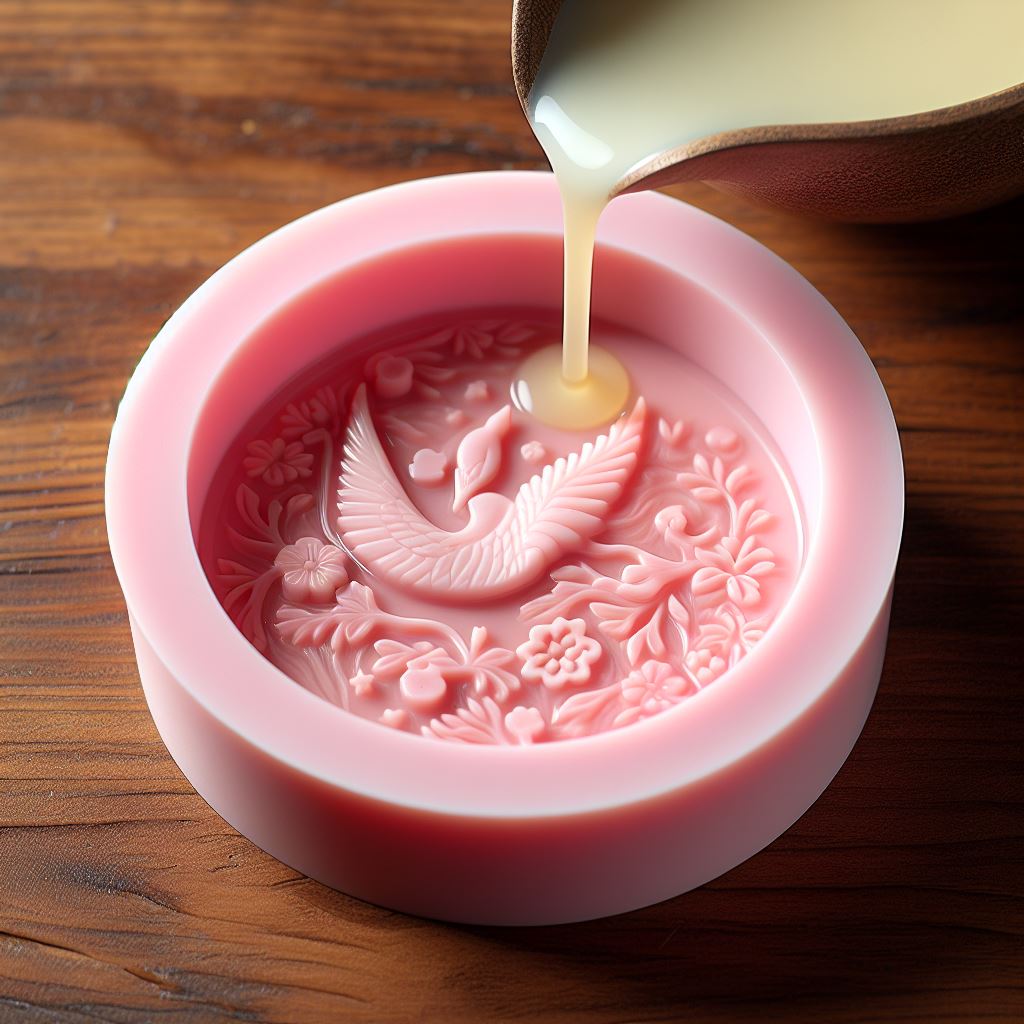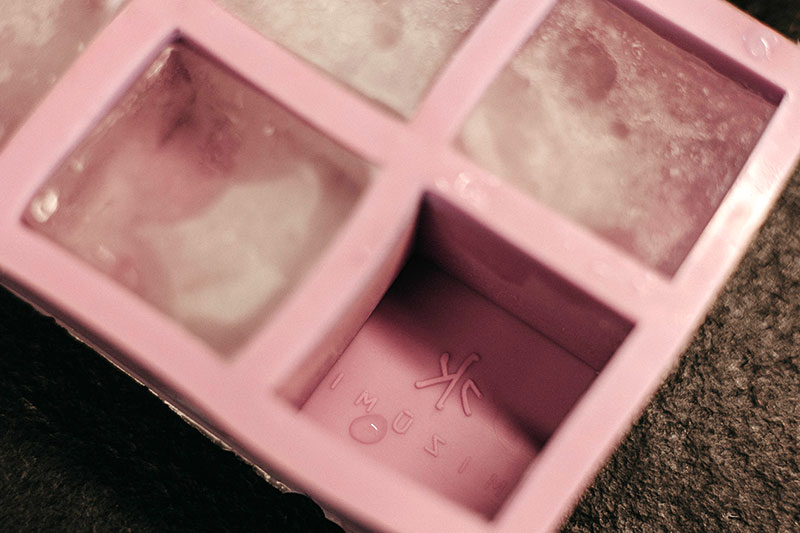Whether for casting concrete, soaps, candles, epoxy resin, butter, ice cream or even for baking: silicone moulds are the ideal tools for this thanks to their properties. In various stores and also on online marketplaces such as Amazon and Ebay, you can find silicone moulds in different sizes, qualities, mould objects and for a wide variety of applications. The disadvantage of this is that you cannot freely design the moulds according to your own ideas. Many of the mass-produced products are also manufactured in China and other countries, sometimes under questionable conditions.
We create individual silicone moulds according to your wishes and ensure that your idea becomes unique. Our silicone moulds are high-quality, durable, reusable and are lovingly handmade by us in Germany. We source our silicone moulds exclusively from manufacturers and suppliers in Germany. We produce your personal silicone mould in our factory from just one mould. Whether you want your own logo, motif or an unusual design, we will support you from the initial idea to the product design and the realisation of the mould. We work with the latest CAD programmes and support you with our many years of experience and creativity.
How are silicone moulds made?
There are various ways in which silicone moulds can be produced. Basically, before the actual casting or manufacturing of products from silicone, a mould, the so-called master mould, must first be produced. This is then used to produce the actual silicone moulds. The only exception to this is direct 3D printing with silicone material.
In the following, we would like to give you a brief insight into two important production methods as well as useful information about silicone moulds.
Injection moulding / liquid silicone rubber process (LSR)
The LSR process is a form of injection moulding that is used to manufacture silicone products and moulds. It is primarily used for the mass production of silicone parts in the medical, dental, construction, industrial, automotive, food and consumer sectors. The process is characterised by very low unit costs. However, it has the disadvantage that mould costs can very quickly reach five to six figures. For smaller runs, such as those required for prototypes, small series or applications in the hobby or art sector, this process is therefore generally not economical. The process is roughly as follows:
- Preparation of the materials: Two liquid components, usually silicone elastomer and a catalyst, are mixed together. This mixture is then fed into an injection moulding machine.
- Injection: The liquid silicone mixture is injected into a mould that has the desired final shape of the silicone product to be produced. The moulds are usually made of metal or plastic.
- Curing: After injection, the mould or silicone is heated to accelerate the curing of the silicone.
- Remoulding: As soon as the silicone has cured, the finished product is ejected from the mould. Depending on the complexity of the product and the mould, this step can be carried out automatically or manually.
Casting process
In addition to the LSR process, silicone moulds and products can also be cast by hand. In this process, two liquid components, the so-called A and B components, are mixed together without bubbles. The chemical reaction then creates a silicone compound. This liquid mixture is then slowly poured into the mould. The silicone then hardens. This process can be accelerated by adding heat. After curing, the finished silicone mould or silicone product is removed from the mould. This method requires more time and effort than the LSR process, but also enables the production of more complex moulds. The very low mould costs make this production method ideal for one-offs and small batches.

What needs to be considered before using silicone moulds for the first time?
Especially when silicone moulds are used for the production of foodstuffs such as cakes, chocolate, fudge, ice cream, butter, etc., it is advisable to clean them properly before using them for the first time. The reasons for this are:
- Hygiene: Dust, dirt or residues can accumulate on new silicone moulds during production and transport. These can be removed by cleaning with warm water or heating in an oven, for example. The heat in the oven can also help to sterilise the silicone moulds by killing bacteria, viruses or other potential pathogens.
- Odour and taste: New silicone moulds sometimes have a slight odour caused by the production process. Heating in the oven helps to reduce or eliminate these odours. It also prevents the flavour or odour from being released into the food to be produced with the silicone mould. The time that silicone moulds should remain in the oven can vary depending on the type of silicone and mixture. However, we recommend heating them in the oven for around 10 to 15 minutes at a temperature of around 150 °C before using them for the first time to be on the safe side.
- Non-stick properties: If new silicone moulds are cleaned and heated in the oven before their first use, this can make it easier to remove food from the moulds.
- Durability and service life: The durability of the silicone moulds can also be improved by cleaning and tempering in the oven.
In summary, it can therefore be said that cleaning and heating new silicone moulds helps to ensure the safety and hygiene of the moulds and improve the quality of the products manufactured with them.

Cleaning and storage
After each use, you should clean your silicone moulds thoroughly to remove food residues or other residues. This can be done with warm soapy water either by hand or in the dishwasher. Drying silicone moulds in direct sunlight should be avoided as this can lead to deformation, discolouration and material deterioration. Make sure that the moulds are completely dry before storing them in a dark and dry place to avoid mould formation or discolouration. It is also advisable to rinse the moulds with water before each use to remove any dust deposits and thus impurities.
Material and quality features
The quality of silicone moulds depends on various factors. These include the silicone used and the manufacturing process. High-quality silicone is characterised by its flexibility, heat resistance and durability. There are different types of silicone with different Shore hardnesses. These are suitable for different applications. A higher Shore hardness usually means a firmer mould, while a lower Shore hardness results in a more flexible mould. We offer several types of silicone with different Shore hardnesses. Depending on the grade, these have different colours ranging from milky white and pink to purple.
Especially if the silicone moulds are to be used for making food such as chocolate, marzipan, cakes, ice cream, biscuits or butter, only food-safe silicone may be used. That is why we use food-grade silicone that is certified or manufactured according to the guidelines of the Bundesinstitut für Risikobewertung (BfR), the U.S. Food and Drug Administration (FDA) and the RoHS (Restriction of Hazardous Substances). These ensure that no harmful substances get into the food to be processed and that the taste is not affected.
Silicone mould for butter in 3D
Common problems and solutions
Some common problems when using silicone moulds are food sticking, the appearance of white spots or discolouration of the moulds. These problems can be due to poor quality silicone, incorrect preparation or improper storage. It is important to care for and store the moulds correctly to avoid these problems.
Especially in the case of larger or silicone moulds with high outer walls, it is sometimes necessary to provide extra support so that the filled liquid or mass does not press against the silicone walls and thereby change the original outer shape. For this purpose, either a frame adapted to the silicone mould can be used or the silicone mould can be placed in fine kinetic sand for better support. We cast all our silicone moulds by hand according to customer requirements. For this reason, depending on the object or motif, there may be air pockets or unevenness. As a rule, however, these are not on the mould surface and therefore have no effect on the casting result. Should you nevertheless notice a serious defect, please contact us so that we can find a solution together.
Last but not least, a note regarding shipping. We pack your ordered silicone moulds with the utmost care. Nevertheless, slight deformations may occur during transport and due to temperature differences. For this reason, it is important that you place the silicone moulds on a flat surface after unpacking and leave them to rest for a while at room temperature. This will allow the moulds to regain their original shape. The process can be accelerated by placing the silicone moulds in water at a temperature of 40 to 50 degrees.
Silicone moulds vs. thermoforming moulds
Compared to thermoforming moulds, silicone moulds can also be used to create moulds in which the object to be reproduced contains undercuts. Depending on the design, silicone moulds are also significantly more temperature-resistant. This makes them ideal for the production of customised hip, cake and ice cream moulds for hotels, bakeries and restaurants, for example. Both thermoforming and silicone moulds can often be reused. By the way: if your product produced with a mould does not contain an undercut, we always recommend our PET-G moulds for chocolate.
Contact us for a personalised offer!
Are you interested in customised silicone moulds or do you have questions about our products? Whether with a logo, motif or an image of products, as an experienced partner we can create your silicone moulds, even for small batches. We cast the silicone moulds by hand, which is why your new moulds will arrive in just a few working days.
Contact us by phone on +49 (0) 7472 / 960 902 0 or visit our contact page to request a personal quote for your custom silicone moulds. We look forward to getting to know you and your project.